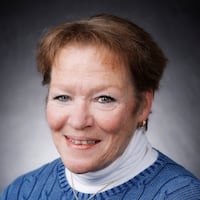“Our revenue estimates predict a moderately fit economy with sustained strong property values and increased earnings on investments, with a temperate prediction surrounding construction and development interests and consumer spending,” Boyko said.
She said she is projecting a 5% decrease in sales tax revenues — the county’s largest revenue generator — to $48 million. The county collected $52.7 million last year and budgeted $50.5 million for this year. As of the end of April the county had collected $18.8 million, an 8.1% increase year-to-date.
Boyko told the Journal-News she was heeding the predictions of economists when she set that figure.
“All economic prognosticators say that we’re going to be entering a probable recession,” she said. “And with a recession prices are high, the ability to borrow money is high, those things all effect consumer spending and consumer spending is a direct impact on how much we collect in sales tax.”
Likewise, based on advice from the county treasurer — who manages the county’s investment portfolio —she is estimating a 206% increase on investment earnings to $4 million. The county earned $1.3 million last year.
The commissioners allowed different departments to increase their budgets 7.5% for materials and supplies and contracted services due to inflation. Plus a 3% hike for salaries and benefits. With those factors the expense budget would have been about $12 million.
Commissioner Don Dixon said the global economy is obviously worrisome but “we’re in pretty substantially good shape to weather through this however this turns out.”
“This time is so uncertain that this is guess your best and hope for the most I guess,” Dixon said about the tax budget. “Our numbers are still looking pretty strong, our reserves are good, we’re in the position we’ve worked to be in since about 10 years ago when we had problems and things were down and looked pretty bleak. It’s still very uncertain, I don’t know what’s ahead.”
The county started this year with general fund balance of $75.4 million and is projecting $119.4 million to start next year. Boyko budgeted $5 million for capital improvements, a $16 million rainy day fund and $15 million in the new capital improvement reserve, to help implement the space utilization study that is underway now.
Aside from the general fund there are a number of departments and independent boards that operate on their own tax levies or are enterprise operations like the Water & Sewer Department that gets fees for its services. The total tax budget for all funds is $345.3 million.
The commissioners also have $74.4 million in American Rescue Plan Act federal funds. They have agreed to share the windfall with other jurisdictions and organizations. Boyko said she expects they will spend roughly $34 million this year, the rest next year and decisions on individual projects should be coming soon.
Commissioner T.C. Rogers said he is surprised so many other jurisdictions are using ARPA money to deal with these turbulent times.
“I’m able to talk to other government leaders and they mention about their budgets and I can’t believe the frequency of using ARPA funds for the operations,” Rogers said. “I’m just fortunate to be here with my buddies to run this in the way that really a business, and in this case a government should be run.”
The bulk of the general fund budget — nearly 70% — goes to run the criminal justice system, namely the courts, sheriff and prosecutor. The sheriff’s office eats up the biggest slice of the general fund with projected expenses of $45.7 million, up 4% from this year’s budgeted amount and 12.3% more than the $40.7 million hat was actually spent last year.
The sheriff has new union contracts and the raises range from 2.5 to 4.5% and step increases from 2 to 9.5%.
“The majority of our budget is driven by personnel and we do have union contracts that effect 90-plus percent of personnel, so those have to be taken into consideration,” Chief Deputy Anthony Dwyer said adding the current climate is hitting their operations hard. “The one that impacts us significantly is fuel. Fuel is hard to predict, now it’s extremely expensive and we’re projecting it may carry into next year.”
The commissioners espouse a performance pay model that was instrumental in reining in bloated budgets a dozen years ago that nearly catapulted the county off a fiscal cliff. The county operates two-part program with 1% to 3% range added to an employee’s base pay which they refer to as part A and another 1% to 3% percent available in lump sum payments they call part B.
The tax budget directive asked people to hold to 3% but Prosecutor Mike Gmoser is asking for 6% for part A. Gmoser told the Journal-News he has the best staff around and “he citizens of Butler County should be happy to pay that for them because they are keeping them safe.”
“I have people on my staff that are experts in the handling of felony criminal trials,” he said. “I don’t want to see them on the other side, I don’t want them to go over to the defense bar. I want to keep them right where they are and I need to make sure they’re well fed and happy with the work they do, and the income they receive.”
The commissioners will hash out all the budgets with face-to-face meetings with everyone in October. Final budgets aren’t passed until December.
About the Author

